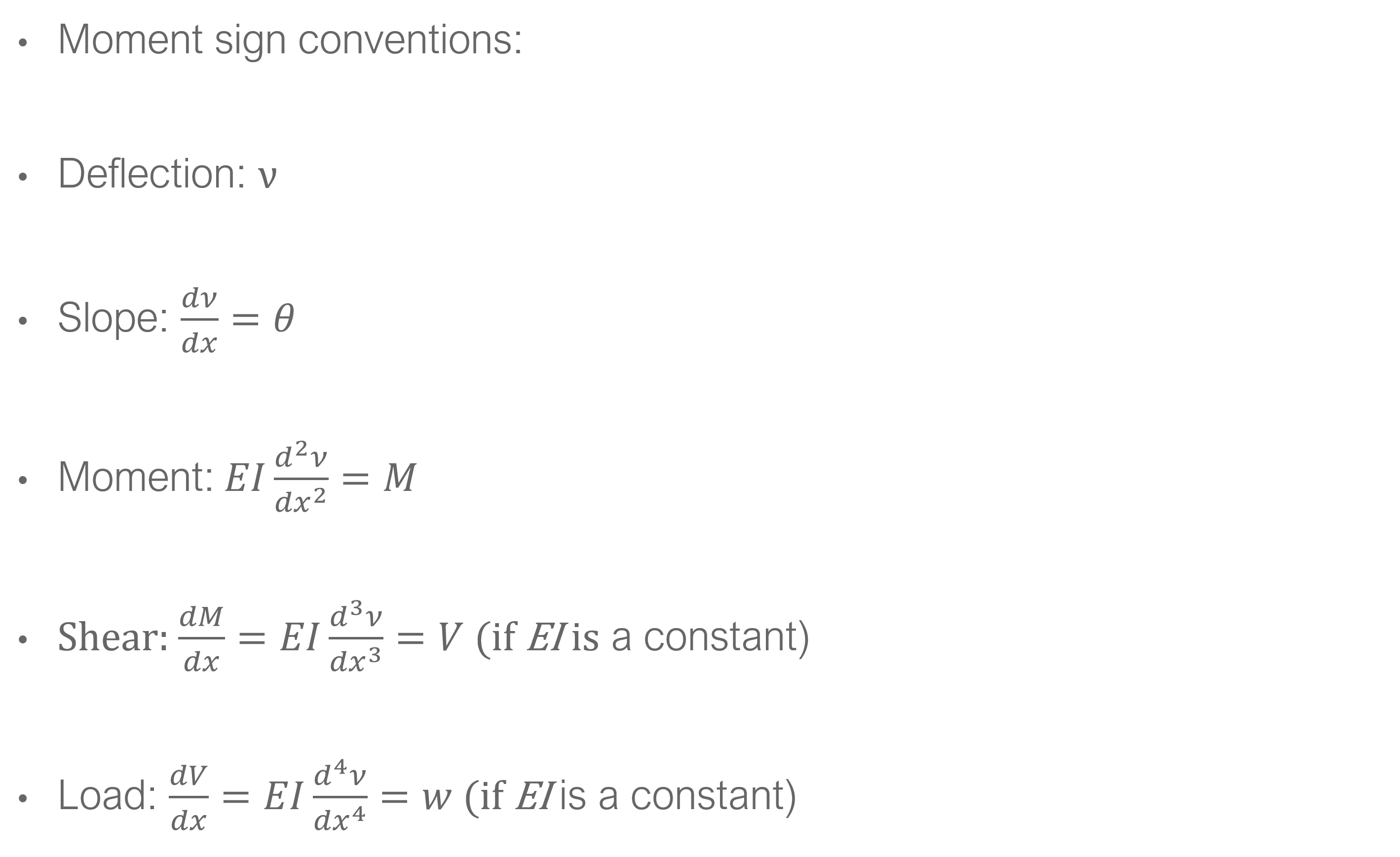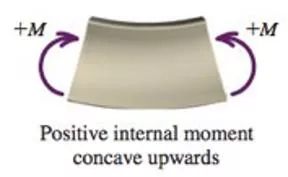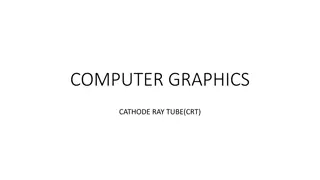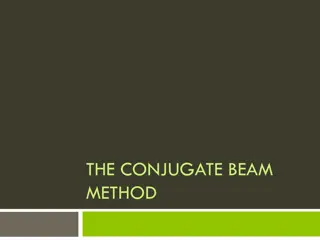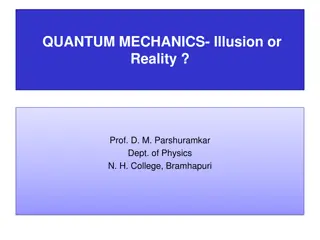Beam Deflection and Integration Method in Mechanics of Materials
Understanding beam deflection through integration method involves analyzing relationships between moment, deflection, slope, and shear in a beam structure. By integrating the moment equation under certain assumptions and boundary conditions, engineers can determine deflections and solve for constants to accurately calculate beam behavior.
Download Presentation

Please find below an Image/Link to download the presentation.
The content on the website is provided AS IS for your information and personal use only. It may not be sold, licensed, or shared on other websites without obtaining consent from the author. Download presentation by click this link. If you encounter any issues during the download, it is possible that the publisher has removed the file from their server.
E N D
Presentation Transcript
Mechanics of Materials Engr 350 Lecture 30 Beam Deflection Integration Method
Beam relationships Moment sign conventions: Deflection: Slope: ?? ??= ? Moment: ???2? ??2= ? ??= ???3? Shear: ?? ??3= ? (if EI is a constant) ??= ???4? Load: ?? ??4= ? (if EI is a constant) 2
Relationships between beam diagrams If you know the deflection curve: Derivative of deflection to get slope Derivative of slope to get moment Derivative of moment to get shear Only one problem: we can t measure deflection easily Usually start from moment diagram and INTEGRATE to get deflection! 3
Deflections by integration of the moment equation If the beam meets all of several assumptions, the moment equation can be integrated to give the deflections of the beam These assumptions are a. Beam deflections are small b. Planes remain plane c. E & I are constant (constant material, prismatic) Boundary conditions a. Specific values of deflection or slope that are known. b. When a beam is analyzed in sections, the boundary conditions are known at the ends of the section. (Bounds of section considered, not necessarily the beam) c. One BC can be used only once to determine a constant of integration 4
Boundary conditions continued At a pinned or roller support we know that ? = 0 At the fixed end of a cantilever beam, we know two things ?? ??= 0 ? = 0, ??? At the free end of a cantilever beam we know two things ? = 0, ??? ? = 0 5
Continuity conditions In beams, different sections can have different moment and shear equations, so we must write different deflection equations in each section. Since the beam is continuous, there is not an abrupt change in the the deflection or slope of the beam and this fact can be used as a boundary condition to solve for constants for the specific section. 6
Symmetry conditions Sometimes symmetry exists in a beam In this case, the slope at the mid- span must be zero Remember, only one constant of integration can be determined from each boundary, continuity, or symmetry condition. 7
Procedure for double integration method 1. Sketch: Sketch the beam including supports, loads, and the x v coordinate system. Sketch the approximate shape of the elastic curve. 2. Support reactions: Determine the beam reactions by considering the equilibrium of the entire beam. Show these reactions in their proper direction on the beam sketch. 3. Equilibrium: For each segment to be considered, draw a FBD that cuts through the beam segment at some distance x from the origin. Show all loads acting on the FBD. From the FBD, derive the bending-moment equation, taking care to note the interval for which it is applicable. 4. Integration:For each segment, set the bending-moment equation equal to ? = ???2? this differential equation twice, obtaining a slope equation ? =?? two constants of integration. 5. Boundary and continuity conditions: List the boundary conditions that are applicable for the bending-moment equation. If the beam is being cut in to segments, list the continuity conditions as well. 6. Evaluate constants: Use the boundary and continuity conditions to evaluate all constants of integration. 7. Elastic curve and slope equations: Replace the constants of integration in step 4 with the values obtained from the boundary and continuity conditions in step 6. 8. Deflections and slopes at specific points: Calculate the deflection at specific points when required. ??2Integrate ?? ,a deflection equation , and 8
Example Problem 1 For the beam and loading shown, and assuming EI is constant, use the double-integration method to determine: (a) the equation of the elastic curve for the beam. (b) the deflection and slope at A. 1. Sketch: Sketch the beam including supports, loads, and the x v coordinate system. Sketch the approximate shape of the elastic curve. See above 2. Support reactions: Determine the beam reactions by considering the equilibrium of the entire beam. Show these reactions in their proper direction on the beam sketch. There are no support reactions at x = 0, but there are two important reactions at x = L. RB= P, and MB= PL 3. Equilibrium: For each segment to be considered, draw a FBD that cuts through the beam segment at some distance x from the origin. Show all loads acting on the FBD. From the FBD, derive the bending-moment equation, taking care to note the interval for which it is applicable. The bending moment equation is: M = -Px (sad beam) 9
Example Problem 1 For the beam and loading shown, and assuming EI is constant, use the double-integration method to determine: (a) the equation of the elastic curve for the beam. (b) the deflection and slope at A. Integration:For each segment, set the bending-moment equation equal to ? = ???2? equation twice, obtaining a slope equation ? =?? 4. ??2Integrate this differential ?? ,a deflection equation , and two constants of integration. ???2? ??2= ?? ???? ??= ??2 ??? = ??3 2+ ?1 6+ ?1? + ?2 5. Boundary and continuity conditions: List the boundary conditions that are applicable for the bending-moment equation. If the beam is being cut in to segments, list the continuity conditions as well. At x = 0 we don t know the slope or the deflection. But at x = L we know both! Additionally, the single moment equation applies over the whole length from 0 ? ? At x = L, ?? ??= 0, and ? = 0 6. Evaluate constants: Use the boundary and continuity conditions to evaluate all constants of integration. ??(0) = ?(?)2 2 2 ??(0) = ? ?3 6 3 + ?1, so ?1=??2 +??2 2(?) + ?2, so ?2= ??3 10
Example Problem 1 For the beam and loading shown, and assuming EI is constant, use the double-integration method to determine: (a) the equation of the elastic curve for the beam. (b) the deflection and slope at A. 7. Elastic curve and slope equations: Replace the constants of integration in step 4 with the values obtained from the boundary and continuity conditions in step 6. Elastic curve equation: ??? = ??3 6+??2 2+??2 2? ??3 ? 3, which becomes ? = 6??( ?3+ 3?2? 2?3) ??= ??2 Beam slope equation: ???? 2, which becomes ?? ? 2??(?2 ?2) ??= 8. Deflections and slopes at specific points: Calculate the deflection at specific points when required. We want to find the specific values at point A, where x = 0. Substitute this in to the above equations to get: 6??( 03+ 3?2(0) 2?3), which becomes ??=??3 ???=??2 2?? ? ??= 3?? ?? ???= 2??(?2 (0)2), which becomes ?? ? 11
For the beam and loading shown, use the double- integration method to determine Example Problem 2 (a) the equation of the elastic curve for the beam. (b) the maximum deflection. (c) the slope at A. Assume that EI is constant for the beam. 12

 undefined
undefined


